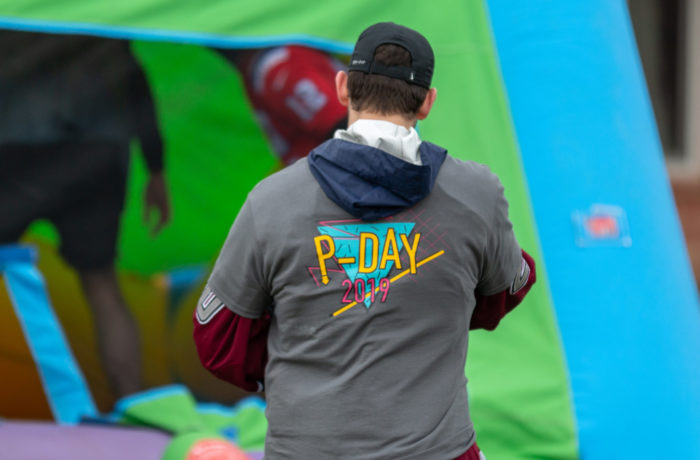
On the Friday before spring break I grabbed the full green compost bucket in my townhouse, walked out the back door, and lifted the lid to the larger compost bucket by the dumpster in the 300s parking lot. I dumped my food scraps into the container, noticing a plastic grocery bag filled with the food scraps of another townhouse deeper inside. While walking back I counted the green bins sitting unused outside the townhouses nearby.
On the Friday before spring break I grabbed the full green compost bucket in my townhouse, walked out the back door, and lifted the lid to the larger compost bucket by the dumpster in the 300s parking lot. I dumped my food scraps into the container, noticing a plastic grocery bag filled with the food scraps of another townhouse deeper inside. While walking back I counted the green bins sitting unused outside the townhouses nearby.
From my perspective as a student at Saint Mike’s, it seems like we have two main composting problems. The rst is getting people to put their food scraps in a composting container. And the second it getting people to do it right.
Composting has been a regular practice on campus since 2012 when the Vermont Legislature unanimously passed Act 148. This act updates the mandatory recycling law to include banning organics like food scraps from the land ll. Since then, there have been composting bins located on every floor of the residence halls, as well as bins distributed to every townhouse and apartment. Yet, many of these containers often go improperly used or unused completely.
Often I hear other students complain that the bins are gross. Many of them worry about bugs and unpleasant smells. But we aren’t producing food scraps that we haven’t already generated in the past. We’re simply changing our behavior a little bit by placing these scraps in a new bin with a sealing lid. Each bin is covered with stickers that designate what can and cannot be placed in the container. For most of us coming from states outside of Vermont these stickers can be really helpful. When I first started using the bin for my food scraps I often read the label to determine whether I was doing the right thing. Acceptable food scraps in these bins include things like fruits and vegetables, meat and bones, fats and sauces, cheese and dairy, and bread and grains. We can’t put plastic, glass, metal, or other packaging in these containers. For some students this information is common knowledge, but for others this process is new and can feel a bit overwhelming.
Seeing the plastic inside the compost bins over the course of the last few weeks has made it clear to me that some of us are trying our best, but we’re all still a bit confused. We still have quite a bit of work to do in getting the word out to the campus community. Composting our food scraps involves changing a waste behavior most of us have been performing since birth, but making the change requires little more on our end than a shifting of our hands from one bin to the next.
I think it’s necessary that we realize that this stuff is really important, and collecting our food scraps correctly can go a long way. It’s not just the law in Vermont. It’s also a way to decrease our carbon footprints, minimize the negative impacts of food waste, and work together to create quality compost.


